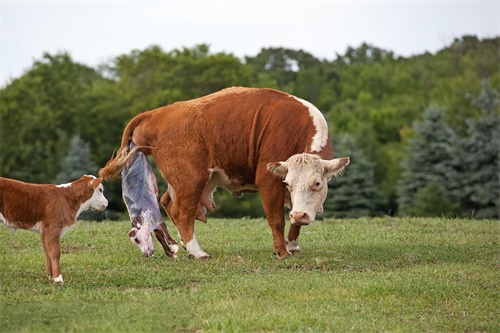What’s the Most Reliable Way to Detect Early Pregnancy in Cows?
For dairy and beef farmers, knowing whether a cow is pregnant early can make or break the breeding schedule. If pregnancy is confirmed quickly, farmers can plan nutrition, manage calving intervals, and avoid wasting time on open cows. On the other hand, relying on guesswork delays breeding decisions and increases costs. The big question is: which method of pregnancy detection is most reliable, practical, and cost-effective for modern farms?

Traditional Signs vs. Modern Tools
Farmers have long relied on visible signs such as changes in appetite, lack of heat, or an expanding belly. While these indicators are simple, they are not reliable in the early weeks. Modern tools now allow farmers and vets to confirm pregnancy with much higher accuracy, often within the first month.
| Method | Time After Breeding | Accuracy | Key Advantage |
|---|---|---|---|
| Behavioral Observation | 21+ days | Low | Cost-free, easy to do |
| Rectal Palpation | 35–40 days | Moderate | Widely available, affordable |
| Ultrasound | 28 days | High | Visual confirmation, detects twins |
| Blood or Milk Progesterone Test | 21–28 days | High | Simple sampling, early results |
Why Early Detection Matters
Missing an open cow means lost time and money. If pregnancy is not detected until 60 or 90 days after breeding, the cow may have already wasted two or three cycles. This can add up to months of delay and thousands of dollars in lost productivity for the herd. Early detection helps farmers decide whether to rebreed, cull, or adjust feeding programs to support pregnancy.
Ultrasound: The Gold Standard
Ultrasound is widely considered the most reliable method for early pregnancy detection. It can confirm pregnancy as early as 28 days after breeding, identify twins, and even check for early embryo loss. Farmers also benefit from being able to see real-time images, which gives confidence in herd management decisions. While the cost of equipment and veterinary visits may be higher, the long-term benefits often outweigh the expense.
Hormone Testing as a Practical Alternative
For smaller farms or those without access to ultrasound, hormone testing offers a practical option. Blood or milk progesterone tests can be performed within 21–28 days of breeding. These tests are accurate for detecting open cows, though they may sometimes give false positives if a cow has ovarian cysts. Still, they offer a quick and affordable solution for early herd-level pregnancy checks.
Conclusion
The most reliable way to detect early pregnancy in cows is through veterinary ultrasound, supported by hormone testing where ultrasound is not feasible. Farmers who adopt these tools shorten calving intervals, improve reproductive performance, and maximize herd profitability. Relying on observation alone is no longer enough—modern farms benefit from precise, early answers.




